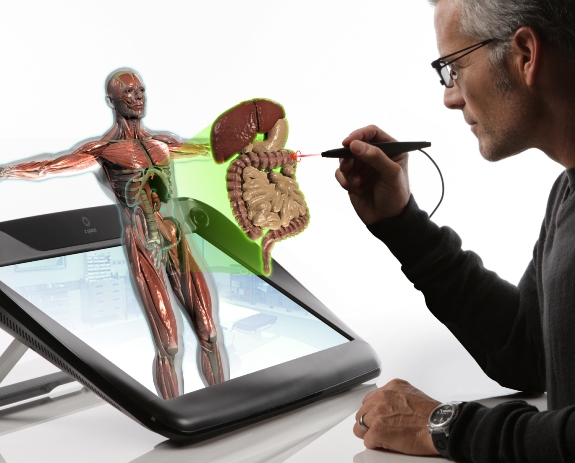3D Imaging & Spine Surgery: The Direction Forward
3D Imaging & Spine Surgery: The Direction Forward
-Dave McNamara

The Challenges of Imaging for Spine Surgery
As you might imagine, spine surgery relies on accurate information. Both surgeons and medical researchers need to know exactly what they’re looking at. The smallest misstep can lead to serious consequences, which is why accurate imaging technology is essential. Imaging technology is now the standard means by which surgeons are able to see what is going on inside the patient prior to, and during, surgery procedures. Because imaging technology is so crucial, the amount of innovation and development within the field has been astronomical. Even today, new technologies and techniques are being researched to improve the success and scope of surgery precision. Though the research field is vast, there’s one particular innovation being implemented that’s been receiving lots of excitement from all medical sectors: 3D imaging technology.
3D Imaging in the Medical Field
In 2009, Dr. Thorsten Tjardes, in the Department of Trauma and Orthopedic Surgery at Germany’s Cologne Merheim Medical Center, led a team of researchers to study the advantages of 3D imaging through fluoroscopy [medical imaging showing a continuous X-ray image on a monitor, similar to what’s used for X-ray movies]. After conducting their research on the technologies they studied in 2009, the published article was cautiously optimistic about the future of 3D imaging. They concluded that 3D imaging will ultimately make older methods, such as CT scanning and the use of x-rays, obsolete.
So eight years later, were they correct? Has 3D imaging technology made back and spine surgeries safer and more effective?
A Closer Look
Before we get into the advantages of 3D imaging for spine surgery, let’s get a better sense of the devices we’re talking about. One that’s often employed is called the O-Arm®. What makes it effective? Here’s a quick breakdown:
- Real-Time Imaging: The O-Arm® allows surgeons to employ real–time imaging before and during their procedures. Depending on the needs of the surgery, it has 2D and 3D capabilities.
- Integration: The device has multiple different applications. It tracks and saves images for easy integration into practice and also cuts down the need for other forms of imaging, such as radiography and increasing efficiency.
- Precision: One of the most important tasks of technologies like the O-Arm® is its ability to be positioned with extreme accuracy. This gives doctors much more control.
The O-Arm® is an example of how 3D imaging has revolutionized the way spine surgeries are conducted.
Stealthier Spine Surgeries
Looking at how these technologies have progressed in 2015, Dr. Austin Bourgeois and his fellow researchers at the University of Tennessee highlighted that lumbar surgeries—those on the lower back—were significantly improved thanks to better imaging approaches. In particular, they pointed out that guided imaging systems able to create a three-dimensional representation of the spine, like the O-Arm®, has contributed to the increased success rate of procedures.
With more reliable information to work from, surgeons are better able to mitigate risks and treat spine conditions more accurately. Dr. Bourgeois and his colleagues also note that such technologies will help further developments in robotic-assisted surgeries, something which will become increasingly common. There’s more work to be done—this modality is still in its infancy—but the outlook looks promising.
Another often-discussed advantage of 3D imaging is, while it does emit some radiation, the emissions are significantly less than older technologies, like CT scans and x-rays. This helps reduce risks associated with surgeries, which is a major positive for patients. In fact, spine surgeries are safer than ever before.
Our Commitment
As a dedicated leader in minimally invasive surgeries and treatments of the spine, North American Spine is committed to applying the latest and most effective approaches to patient care. Employing nationally-recognized experts in the field, you can be sure that this treatment center stays on top of cutting-edge developments. If there’s any new way to improve health outcomes, you can be sure our team will be well-versed, and ready, to apply it.
Learn more about the work these experts do by talking to one of the Patient Care Managers at North American Spine. Call them anytime at (877) 474-2225.
References
- Tjardes, Thorsten, Sven Shafizadeh, Dieter Rixen, Thomas Paffrath, Bertil Bouillon, Eva S. Steinhausen, and Holger Baethis. 2009. "Image-Guided Spine Surgery: State Of The Art And Future Directions". European Spine Journal 19 (1): 25-45. Springer Nature. doi:10.1007/s00586-009-1091-9.
- "O-Arm Surgical Imaging". 2017. Oarm.Com. Accessed March 20 2017. http://www.oarm.com/.
- Bourgeois, Austin C., Austin R. Faulkner, Alexander S. Pasciak, and Yong C. Bradley. 2015. "The Evolution Of Image-Guided Lumbosacral Spine Surgery". Annals Of Translational Medicine 3 (5). http://atm.amegroups.com/artic... O, et al. 2017. "[Intraoperative 3D Imaging In Spinal Surgery]. - Pubmed - NCBI ". Ncbi.Nlm.Nih.Gov. Accessed March 20 2017. https://www.ncbi.nlm.nih.gov/pubmed/276466
